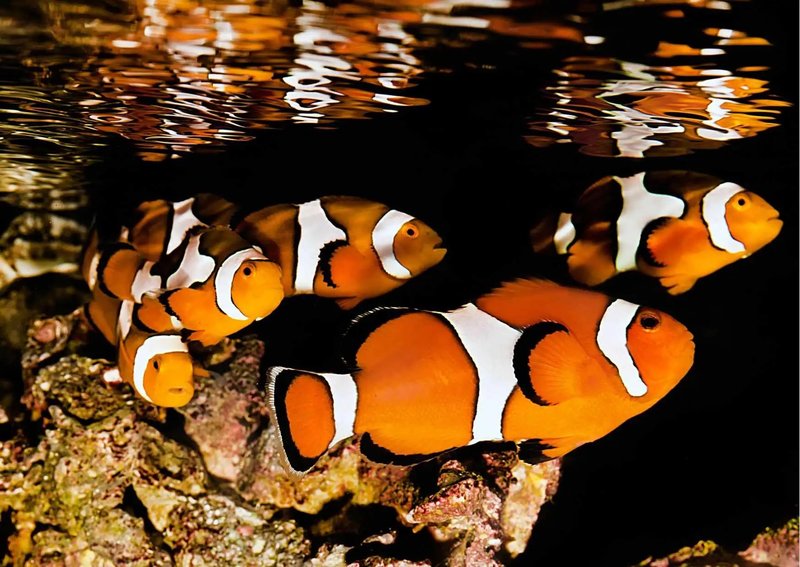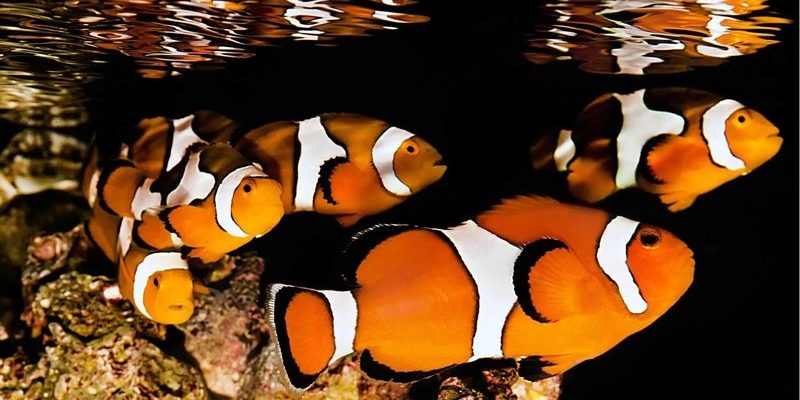
In the ocean, clownfish have interesting behaviors and personalities that help them thrive. Their lives are all about balance, harmony, and a bit of drama—kind of like a reality show underwater! Let’s dive into their world and explore their fascinating behavior and temperament, and you might find yourself loving these little guys even more.
Understanding Clownfish Behavior
Clownfish are known for their unique relationships with sea anemones. This partnership is pretty special. While clownfish get protection from predators by living among the anemone’s stinging tentacles, they also provide food and cleaning services in return. It’s almost like they have a mutual agreement. The clownfish have built up an *immunity* to the anemone’s stings, which is quite impressive when you think about it.
You might be wondering what happens when a clownfish first meets its anemone. Well, this little fish doesn’t just dive in right away. Instead, it approaches the anemone cautiously, rubbing its body against the tentacles to get used to the sting. It’s a bit like dipping your toes in the water before jumping in—a necessary step to ensure safety and comfort.
Once a clownfish has established itself in an anemone, the real drama begins. Clownfish are known for their hierarchical social structures, which means they have a way of organizing themselves. The female is typically the largest and most dominant, followed by her mate, the smaller male. This little social structure creates a *pecking order*, and if anything happens to the female, the male can transform into a female and take her place. Talk about a talent for adaptability!
Temperament and Personality Traits
When it comes to personality, clownfish can be quite bold and feisty. They often display behaviors that may seem aggressive to other fish, especially when defending their territory. It’s like they wear their hearts on their fins! If another fish gets too close to their anemone, expect to see a clownfish darting toward it with a little flair, making sure everyone knows this is its home.
However, their boldness doesn’t mean they’re always aggressive. Clownfish can also be quite playful. They’re known to swim around in loops and do little dance-like movements, which adds a layer of charm. It’s a lot like watching a lively performance in a tiny underwater theater. This playful behavior is mostly seen in a safe environment or when they feel comfortable, which is usually around their anemones.
Interestingly, the temperament of clownfish can also vary based on their environment. In a more spacious tank, for instance, clownfish might express themselves differently than in a crowded one. This is because they feel less threatened when they have room to swim and explore. So, if you’re thinking about keeping clownfish in an aquarium, keep that in mind!
Clownfish Communication
Clownfish are known for their unique ways of communicating. They don’t have a voice like we do, so they rely on body language and sound to express themselves. For example, when two clownfish want to show affection or establish a bond, they might swim close together and perform a little shimmy. It’s like their version of a friendly handshake or a hug!
They also produce a range of sounds through vibrating their swim bladders. These sounds can signify various emotions, from excitement to warnings. For instance, a quick, short sound might indicate that the fish is feeling threatened, while a series of softer tones can be a way of showing happiness and contentment. Their communication is quite complex, reflecting their social nature.
Understanding how clownfish communicate can help you better appreciate their behavior. If you notice your clownfish making sounds or engaging in specific swim patterns, it can offer insight into their mood. It’s almost like reading their own little underwater diary!
Feeding Behavior
When it comes to feeding, clownfish are not picky eaters, but they do have preferences. They thrive on a diet rich in variety, including high-quality flakes, pellets, and frozen food. If you’ve ever watched a clownfish eat, you might find it fascinating how they dart in and out to grab food. It’s like they’re playing a little game of tag with their meals!
Feeding behavior is also a chance for you to see their *social dynamics* at play. The dominant female often eats first before allowing the male and any smaller fish to share the meal. This hierarchy ensures that the strongest fish get the most food while maintaining balance in their little community. It’s a clever system, and it shows how instinctual their behaviors are.
Plus, feeding time can be an excellent opportunity for enrichment. If you change up their food source or feeding techniques, you can stimulate their natural instincts. Try using feeding devices or placing food at different spots within the tank to encourage exploration. This not only keeps them engaged but also allows you to observe their clever antics as they hunt down their treats!
Clownfish and Their Environment
The natural habitat of clownfish plays a significant role in shaping their behavior. They primarily live in warm, shallow waters of the Pacific and Indian Oceans, often nestled within the protective tentacles of sea anemones. The anemones provide shelter from predators, and the clownfish provide nutrients through their waste—talk about a win-win!
But let’s not forget—maintaining the right environment is crucial for their well-being. In an aquarium setting, clownfish need plenty of hiding spots and a suitable companion (like an anemone or alternative decorations). Without proper surroundings, they can become stressed or aggressive. They thrive in clean water with stable temperatures, so regular water changes and monitoring are essential.
If you’re thinking of creating a home for clownfish, consider adding elements that mimic their natural habitat. Incorporating rocky structures and plants can give them places to explore and hide, making your aquarium a vibrant, active space. It’s like bringing a piece of their ocean home, and you’ll enjoy watching them interact with their surroundings.
Breeding and Parenting Habits
Breeding clownfish is as fascinating as their day-to-day behavior! When it comes to reproduction, clownfish are known for their loyalty. They form monogamous pairs, meaning they stay with one partner for life. The female lays eggs on flat surfaces near their anemone, and the male takes on the role of protector by guarding the eggs until they hatch. Talk about teamwork!
During this time, the male becomes very attentive. He fans the eggs with his fins to ensure they receive enough oxygen and keeps a close eye on them to ward off any potential threats. This protective behavior demonstrates their nurturing side and shows how strong their bond is. After about a week, the eggs hatch, and the tiny clownfish larvae swim out into the ocean, embarking on their adventure.
It’s important to note that breeding clownfish in captivity can be quite challenging. It requires specific conditions and lots of patience. If you’re up for a new challenge and want to create a breeding pair, make sure to research the best methods and environments for success.
Final Thoughts
The world of clownfish is full of surprises, isn’t it? From their unique relationships with sea anemones to their playful personalities and nurturing behaviors, these little fish lead a fascinating life. Understanding their behavior and temperament can enhance your appreciation for these wonderful creatures, whether you’re an aquarium enthusiast or just love watching them in nature documentaries.
So, the next time you see a clownfish darting around its anemone, take a moment to admire the intricacies behind its behavior. There’s so much more than what meets the eye, and hopefully, this dive into their world has made you appreciate them a little more. Just like in life, it’s the little details that make all the difference!

